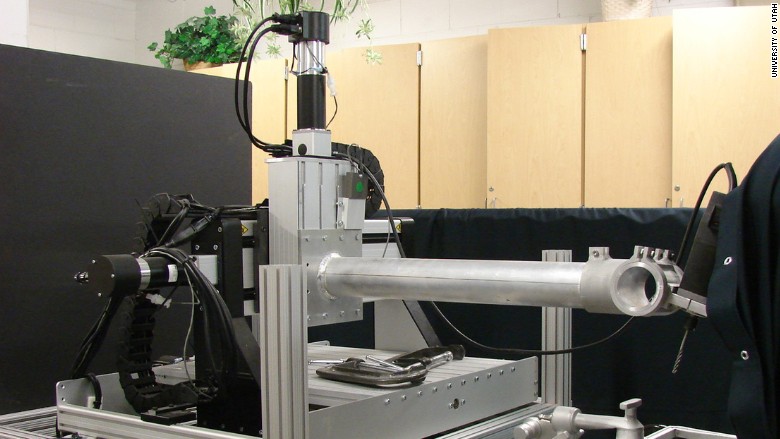Anatomical Automatic Labeling Manual Dexterity

• 1.1k Downloads • Abstract Degus ( Octodon degus) are rodents that are becoming more widely used in the neuroscience field. Degus display several more complex behaviors than rats and mice, including complicated social behaviors, vocal communications, and tool usage with superb manual dexterity. However, relatively little information is known about the anatomy of degu brains. Therefore, for these complex behaviors to be correlated with specific brain regions, a contemporary atlas of the degu brain is required. This manuscript describes the construction of a three-dimensional (3D) volume rendered model of the degu brain that combines histological and magnetic resonance images. This atlas provides several advantages, including the ability to visualize the surface of the brain from any angle.
Routinely checks and verifies that surgical case numbers match blocks and slides; prints labels as appropriate. Prior histology work experience in an anatomical pathology laboratory. Manual dexterity to use common laboratory equipment and perform sterile techniques as required. Apr 18, 2015. Our goal is to inform the design of high-performance input methods by providing detailed analysis of the performance and anatomical characteristics of finger motion. We conducted an experiment using a commercially available sensor to report on the speed, accuracy, individuation, movement ranges, and.
The atlas also permits virtual cutting of brain sections in any plane and provides stereotaxic coordinates for all sections, to be beneficial for both experimental surgeries and radiological studies. The reconstructed 3D atlas is freely available online at:. The caviomorph rodent Octodon degus, commonly called the trumpet-tailed rat or the degu, is widely used as an animal model of human diseases. Over the last several decades, degus were used to study diabetes, hyperglycemia, pancreatic function, and adaptation to high altitude (Wright and Kern ). In addition, degus are also becoming more widely used in the neuroscience and neurological medicine fields (Braidy et al.
Recent studies used degus to assess the relationship between sociality and cognitive brain functions (Helmeke et al. ), and the evolutionary aspects of the acquisition of tool-use abilities (Okanoya et al. Furthermore, degus are biparental animals. Paternal care of degus regulates the developmental expression pattern of CRF-expressing interneurons in the amygdala and hippocampus (Seidel et al. ) and the development of catecholaminergic innervation of the prefrontal cortex and related limbic brain regions (Braun et al.

Thus, degus have unique physical and behavioral features that are beneficial for various developmental and evolutionary studies. Degus are often a more suitable research model than rats or mice because of these unique characteristics. Studies using degus have uncovered several interesting brain functions and dysfunctions associated with specific behaviors. However, these behaviors are generally associated with broad brain regions (Ardiles et al.; Bock et al.; Braun et al. Degu studies have also led to the discovery of neuropathological loci that may be relevant for Alzheimer’s disease (Braidy et al. However, these studies also lacked precise localization of defects to specific brain structures. These difficulties are due in part to a lack of appropriate maps that precisely define brain structures in degus. Logistic Regression Program Rts on this page.
Precise maps of brain structures also permit the application of newer technologies to analyze brain functions in animal models. Positron emission tomography (Virdee et al.
) and magnetic resonance imaging (MRI) (Higuchi et al. ) techniques are commonly used to examine brain metabolism in small animals such as mice. However, the lack of precise maps of degu brain structures severely limits the usefulness of these technologies for degu-based research.
To precisely assess degu brain structures in behavioral, histological, and imaging studies, a contemporary degu brain atlas is required. Several rodent brain atlases are currently used (Paxinos et al.; Purger et al. Synthogy Ivory 1 5 Keygen Torrent. Raps Fundamentals Of Us Regulatory Affairs Seventh Edition Catalog. ), including one of the degu brain (Wright and Kern ). However, current studies that utilize techniques such as magnetic resonance (MR) images require histologically detailed brain atlases. There are no high-resolution degu brain atlases currently available.
This study describes the construction of a Web-accessible, three-dimensional (3D), digital volume rendered degu brain atlas. This degu brain atlas was constructed by combining MR images with full-color histological images. The atlas can be freely rotated and allows virtual sectioning and axis readjustments. These parameters provide practical guidance for stereotaxic surgeries and electrophysiological experiments in addition to a map of annotated brain structures. The main purpose of this study was to provide a structural guide that can be used to map brain functions in degus. Degus show human-like social and skilled behaviors that make them a more appropriate model for some studies than mice and rats. For these reasons, degus are becoming an essential experimental animal model in the study of human neurological diseases.